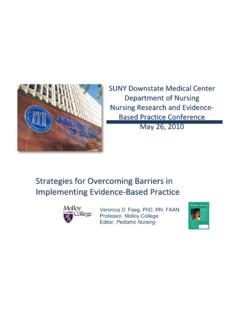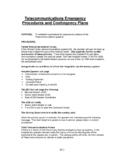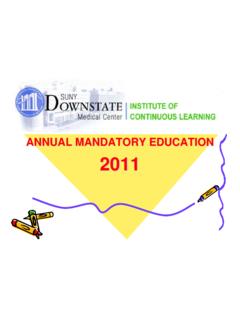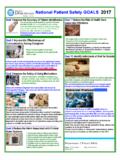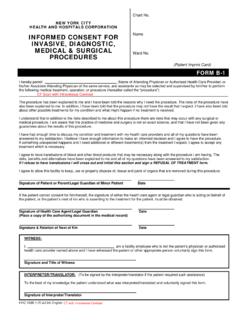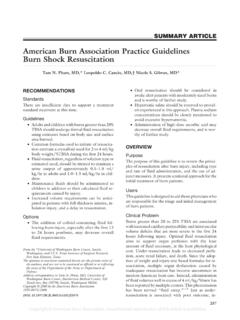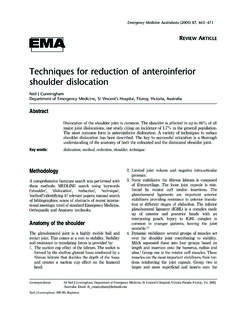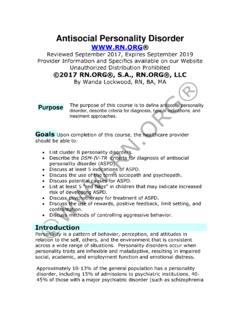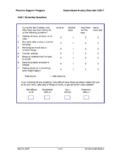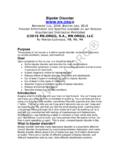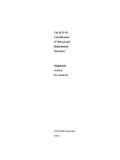Transcription of DSM-5 cannabis use disorder: A phenotypic and genomic ...
1 Drug and Alcohol Dependence 134 (2014) 362 369 Contents lists available at ScienceDirectDrug and Alcohol Dependencej ourna l ho me p age: cannabis use disorder: a phenotypic and genomicperspective Arpana Agrawala, , Michael T. Lynskeya,b, Kathleen K. Bucholza, Manav Kapoora,Laura Almasyc, Danielle M. Dickd, Howard J. Edenberge, Tatiana Foroude, Alison Goatea,Dana B. Hancockf, Sarah Hartza, Eric O. Johnsonf, Victor Hesselbrockg, John R. Kramerh,Samuel Kupermani, John I. Nurnberger , Marc Schuckitj, Laura J. BierutaaWashington University School of Medicine, Department of Psychiatry, St.
2 Louis, MO, USAbKing s College, Institute of Psychiatry, London, UKcTexas Biomedical Research Institute, San Antonio, TX, USAdVirginia Commonwealth University, Virginia Institute of Psychiatric and Behavioral Genetics, VA, USAeIndiana University School of Medicine, Indianapolis, IN, USAfRTI International, Behavioral and Health Epidemiology Program, Research Triangle Park, NC, USAgUniversity of Connecticut, Department of Psychiatry, Farmington, CT, USAhUniversity of Iowa School of Medicine, Department of Psychiatry, Iowa City, IA, USAiUniversity of Iowa Hospitals, Division of Child Psychiatry, Iowa City, IA, USAjUniversity of California at San Diego, Department of Psychiatry, San Diego, CA, USAa r t i c l e i n f oArticle history:Received 29 August 2013 Received in revised form 6 November 2013 Accepted 6 November 2013 Available online 16 November 2013 Keywords:CannabisDSM-5 GWASA ssociationGeneticsHeritabilitya b s t r a c tBackground.
3 We explore the factor structure of DSM-5 cannabis use disorders , examine its prevalenceacross European- and African-American respondents as well as its genetic underpinnings, utilizing datafrom a genome-wide study of single nucleotide polymorphisms (SNPs). We also estimate the heritabilityof DSM-5 cannabis use disorders explained by these common : Data on 3053 subjects reporting a lifetime history of cannabis use were utilized. Exploratory andconfirmatory factor analyses were conducted to create a factor score, which was used in a genome-wideassociation analysis. p-values from the single SNP analysis were examined for evidence of gene-basedassociation.
4 The aggregate effect of all SNPs was also estimated using Genome-Wide Complex : The unidimensionality of DSM-5 cannabis use disorder criteria was demonstrated. ComparingDSM-IV to DSM-5 , a decrease in prevalence of cannabis use disorders was only noted in European-American respondents and was exceedingly modest. For the DSM-5 cannabis use disorders factor score,no SNP surpassed the genome-wide significance testing threshold. However, in the European-Americansubsample, gene-based association testing resulted in significant associations in 3 genes (C17orf58, BPTFand PPM1D) on chromosome 17q24.
5 In aggregate, 21% of the variance in DSM-5 cannabis use disorderswas explained by the genome-wide SNPs; however, this estimate was not statistically : DSM-5 cannabis use disorder represents a unidimensional construct, the prevalence of whichis only modestly elevated above the DSM-IV version. Considerably larger sample sizes will be required toidentify individual SNPs associated with cannabis use disorders and unequivocally establish its polygenicunderpinnings. 2013 Elsevier Ireland Ltd. All rights reserved. Supplementary material can be found by accessing the online version of thispaper at and by entering doi.
6 Corresponding author. Tel.: +1 314 286 1778; fax: +1 314 286 address: (A. Agrawal).1. IntroductionCannabis is the most commonly used illicit psychoactive sub-stance in developed nations (Degenhardt and Hall, 2012). Whilea majority of cannabis users do not report problems, 10 30%of those who ever use cannabis meet criteria for a lifetimehistory of cannabis abuse or dependence as defined by thefourth edition of the Diagnostic and Statistical Manual (DSM-IV;American Psychiatric Association, 1994). Recently, changes to the0376-8716/$ see front matter 2013 Elsevier Ireland Ltd. All rights Agrawal et al.
7 / Drug and Alcohol Dependence 134 (2014) 362 369363diagnostic criteria for substance use disorder have been made inDSM-5 (American Psychiatric Association, 2013), including severalfor the diagnosis of cannabis use disorders (Hasin et al., 2013).Across the broad range of substance use disorders , (i) the distinctionbetween abuse and dependence has been replaced by a unidimen-sional symptom count, with endorsement of 2 or more symptomsresulting in a DSM-5 diagnosis of substance use disorder (endorse-ment of specific numbers of symptoms define a mild, moderateor severe diagnosis); (ii) the DSM-IV criterion of legal problemshas been eliminated from the diagnostic repertoire.
8 And (iii) a newcriterion for the DSM-5 , craving (a long held substance depend-ence criterion in the International Classification of Disease, ICD)has been added. More specifically for cannabis , withdrawal is nowa criterion. A wealth of psychometric evaluations in epidemiologi-cal (Agrawal et al., 2008; Compton et al., 2009; Gillespie et al., 2005;Hartman et al., 2008; Hasin et al., 2012, 2008; Langenbucher et al.,2004; Lynskey and Agrawal, 2007; Martin et al., 2006; Piontek et al.,2011; Wu et al., 2009, 2012) and clinical samples (Budney, 2006;Budney and Hughes, 2006) support these recommendations; how-ever, the impact of these revisions on the prevalence of cannabisuse disorders under the new DSM-5 classification remains largelyunexplored.
9 A recent study of Australian adults found a modestreduction in the rate of cannabis use disorder with the transitionfrom DSM-IV to DSM-5 (Mewton et al., 2013), while another studyof individuals with substance use disorders noted a modest increaseof 4% (Peer et al., 2013).Twin studies indicate that 50 60% of the variation in cannabisuse disorders (abuse/dependence, variously defined using DSM-IIIR, DSM-IV and ICD) can be attributed to heritable influences(Verweij et al., 2010). Despite this robust heritability estimate,association studies for cannabis use disorders have largely failedto identify genetic variants of significant and replicable effect.
10 Aprior genome-wide association study (GWAS) of DSM-IV cannabisdependence, conducted in the sample used in this study, failed toidentify genetic variants at a statistically significant level (Agrawalet al., 2011b). This has resulted in speculation regarding the bio-logical underpinnings of cannabis use disorders ; in particular, thequestion of whether common variation available in commerciallyavailable genome-wide arrays captures it (Sullivan et al., 2012).Aggregating the effects of all single nucleotide polymorphisms(SNPs) on commercial arrays might quantify the overall role of com-mon SNPs as well as causal variants in linkage disequilibrium (LD)Table 1 Prevalence (%) of individual DSM-IV and proposed DSM-5 criteria for cannabis usedisorder in 3053 lifetime cannabis users of European-American (EA) and African-American (AA)

